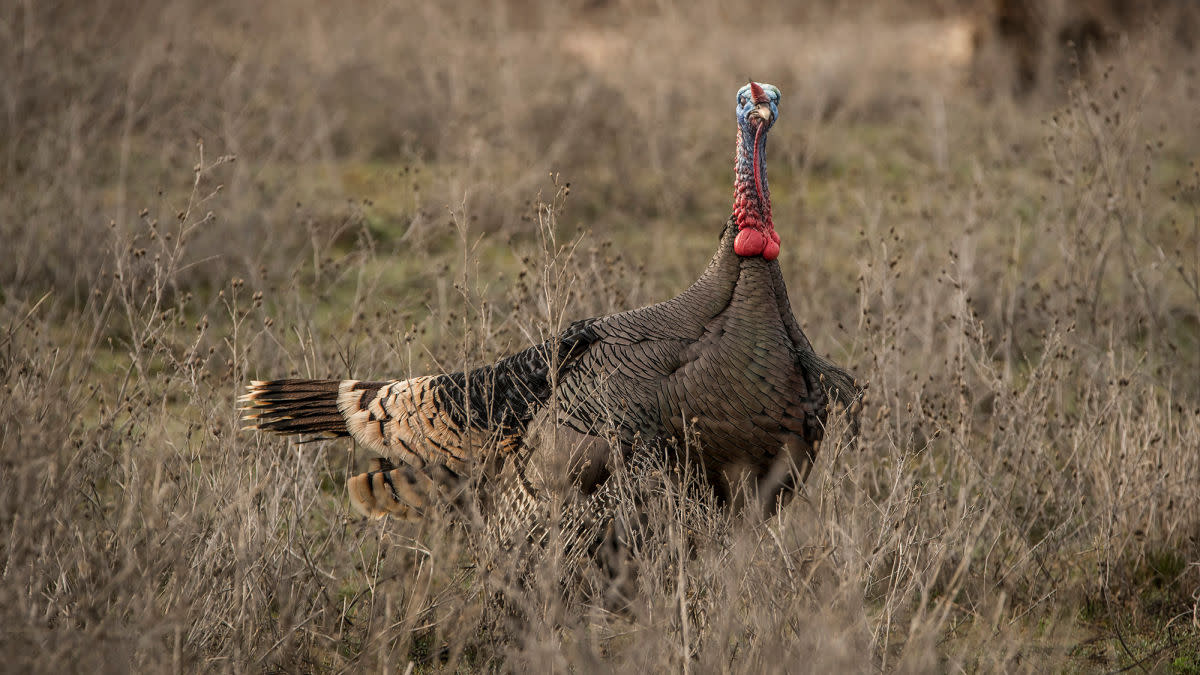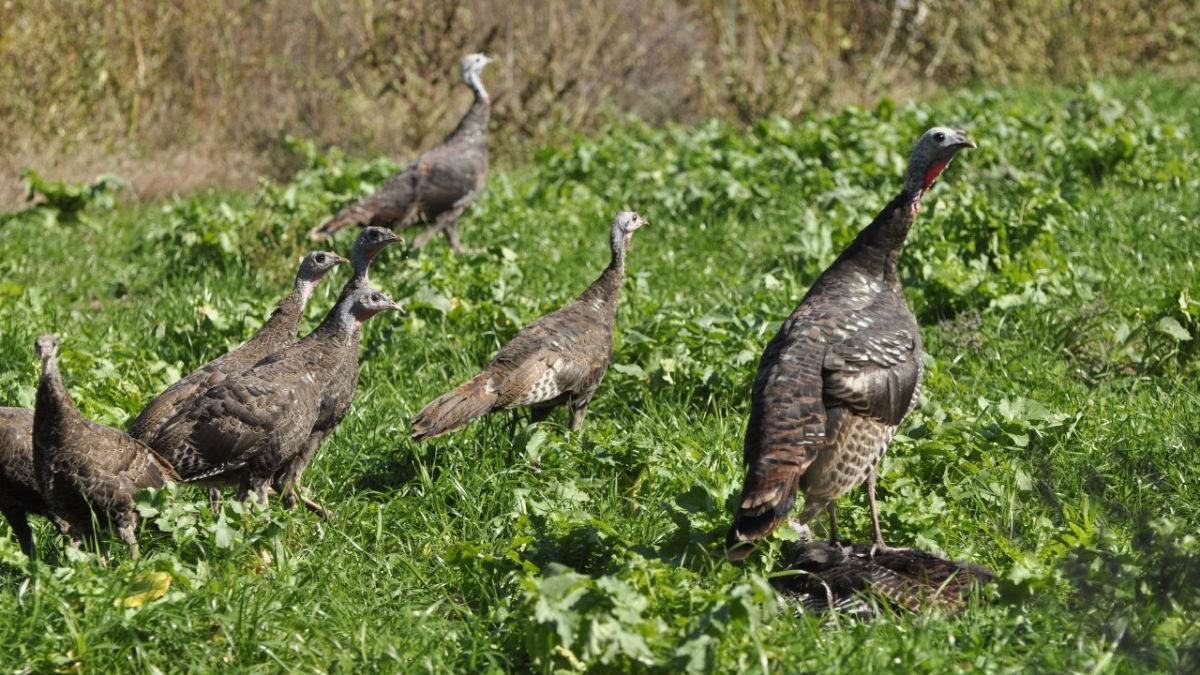
While the average weight of a fall turkey is below 15 pounds, a bird of that size will consume roughly five pounds of food each week. That doesn’t sound like much, but fall turkey flocks balloon in size this time of year. On the small side, a flock of just a dozen birds will vacuum up 60 pounds of food each week before winter, and they don’t take kindly to rival birds homing in on their calories.
This territoriality is what makes fall turkeys susceptible to certain hunting tactics, and what makes the pursuit so fun.
If you can figure out where birds are feeding daily, you can simply bushwhack one. Or, you can slip in and set up a blind with a single feeding hen decoy. After that, yelp, cut, purr, and cluck to any nearby birds. You’ll often get the same response from toms in November that you’ll get in April, even though many hunters claim spring tactics won’t work on fall birds.
That’s simply not true, and if you want to learn how to speak turkey by conversing with lots of garrulous birds, fall is where it’s at. You probably won’t hear as much gobbling as a spring hunt, but the flocked-up birds will still converse with you if you open up the lines of communication.
This goes for flocks of hens and poults, as well as flocks of gobblers. Neither will tolerate a single, loudmouth hen who appears to be feeding in their field. I’ve filled plenty of fall tags in several states with this method and have arrowed many hens that were chest-bumping my decoy in crazy shows of dominance.

There are a few things to consider for pulling off one of these hunts, though. Scouting is crucial for killing any fall bird. If you see the flock in a cut cornfield today at noon, they’ll be there tomorrow. If you don’t see birds but find plenty of sign, plan a mid-morning sit. If they don’t show, come back the next day for an afternoon sit. Since turkeys aren’t nocturnal, you’ll be able to pin down their pattern after a couple of hunting failures.
Set your decoy at 10 yards for bowhunting or 20 yards for shotgunning. Bring two calls, a diaphragm and a slate. This will allow you to yelp loudly with the mouth call while cutting with the slate. Don’t be call-shy, and if you get a distant response from a hen, talk back. If she yelps, you yelp louder. Oftentimes it’s a matter of making every call you can until you get a response. Then it’s all about telling off the dominant hen until she leads the flock to you. Throw in some scratching to sell the ruse that a stranger is eating the groceries.
If possible, have multiple tags in your pocket and sit tight if you shoot a bird. Hens will hop on their dead sisters just like spring toms will stomp their fallen brothers. Oftentimes, especially if you’re bowhunting, a good shot on a bird will keep the rest of the flock around for a long time, which opens up more opportunities.
While it hasn’t caught on like spring turkey hunting, fall forays done right can be just as exciting if you put in a little legwork to find the flocks. The only difference is that you’re hunting birds that think with their stomachs instead of their hearts.
Feature image via Tony Bynum.




